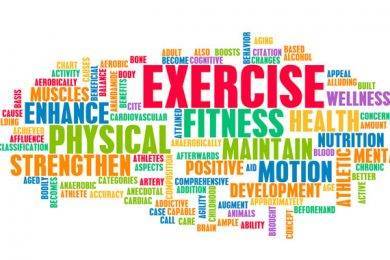The basic or fundamental exercises are of enormous importance in the development of the natural athlete. They are the basis for building a quality physique and cannot be omitted in any type of training regardless of the goal. They consist of deadlift, squat, bench, slow forward, pull-ups, oarsman, dip, barbell curl; (personally I recommend focusing on these exercises, gradually increasing the loads). The number of total exercises in the session can vary from a minimum of 4 to a maximum of 7.
- TRAINING FREQUENCY
Weekly training sessions must be a maximum of 3, interspersed with a recovery day between workouts.
- INTENSITY
Over time you have to learn to train hard, with the aim of working at maximum intensity and doing that extra repetition that we weren’t able to do last time. Toya Johnson Shares Footage From The Double Dutch Competition Warm-up – See The Ladies Training. The best way to train intensely is to get to “true” muscle failure, that is, when the mind, in addition to the physical, just can’t push.
- SERIAL NUMBER AND REPETITIONS
If the goal is hypertrophy, the exercises must be carried out with a load of 75-80% of the ceiling , no more than 3/4 training series, reaching muscle failure between 6-8 repetitions, respecting a form of perfect execution, with a 100% commitment to every single repetition.
- EXECUTION TECHNIQUE
Study and learn the correct execution technique of each exercise, without ever sacrificing it to use more weight than you can manage.
- DURATION OF TRAINING
The total duration of the training must not exceed 50/60 minutes.
After this period there is an increase in cortisol at the expense of testosterone, which decreases. Cortisol is a very important hormone, but its increase is feared by all body builders, since it has a catabolic affect for the muscles, therefore it limits, or better blocks, the levels of muscle growth.
- POWER SUPPLY
The parameters to be taken into account for bodybuilding nutrition are: adequate protein intake and proportionate calorie intake; use of monounsaturated and polyunsaturated fats (the former are found in olive oil and a lot of dried fruit, the latter include omega 3 and omega 6); eat with a constant cadence (the famous 3 hours), making 5/6 meals a day; feeding on carbohydrates according to their glycemic index in relation to training; adequate water intake.
- REST
For muscle development, rest is just as important as the type of training and nutrition. It is necessary to sleep at least 8 hours a night, moreover the duration of the rest, besides allowing an optimal recovery to the training, must potentially guarantee a level of growth, therefore it is important to increase the rest by a few hours.
- LIMIT THE CARDIO
Personally I do not recommend aerobic exercise to Hard-Gainers, it would be better to wait for the first objectives to be achieved before performing it, even if a minimum of aerobic work can only do well.
Aerobic work produces numerous benefits: it improves muscle endurance; allows slimming; improves the efficiency of the cardiovascular system and consequently reduces the risk of myocardial infarction; allows the decrease in the rate of LDL or bad cholesterol ” and an increase in the HDL or good cholesterol makes the onset of diabetes and hypertension less likely, and allows for many other benefits.
The ideal can be to limit the cardio to the maximum so as not to lose some muscle mass acquired so hard.
- PATIENCE + CONSTANCE
In this sport discipline perseverance and patience are very important factors.
The results are sometimes slow and minimal, but not unproductive. The quality physique must be built very calmly, training after training, sacrifice after sacrifice. The beauty, but also the most difficult in this sport, is to find the right compromise between all the above factors, not a single one is enough; it is the whole that allows the achievement of the final goal and not the single points or factors.











